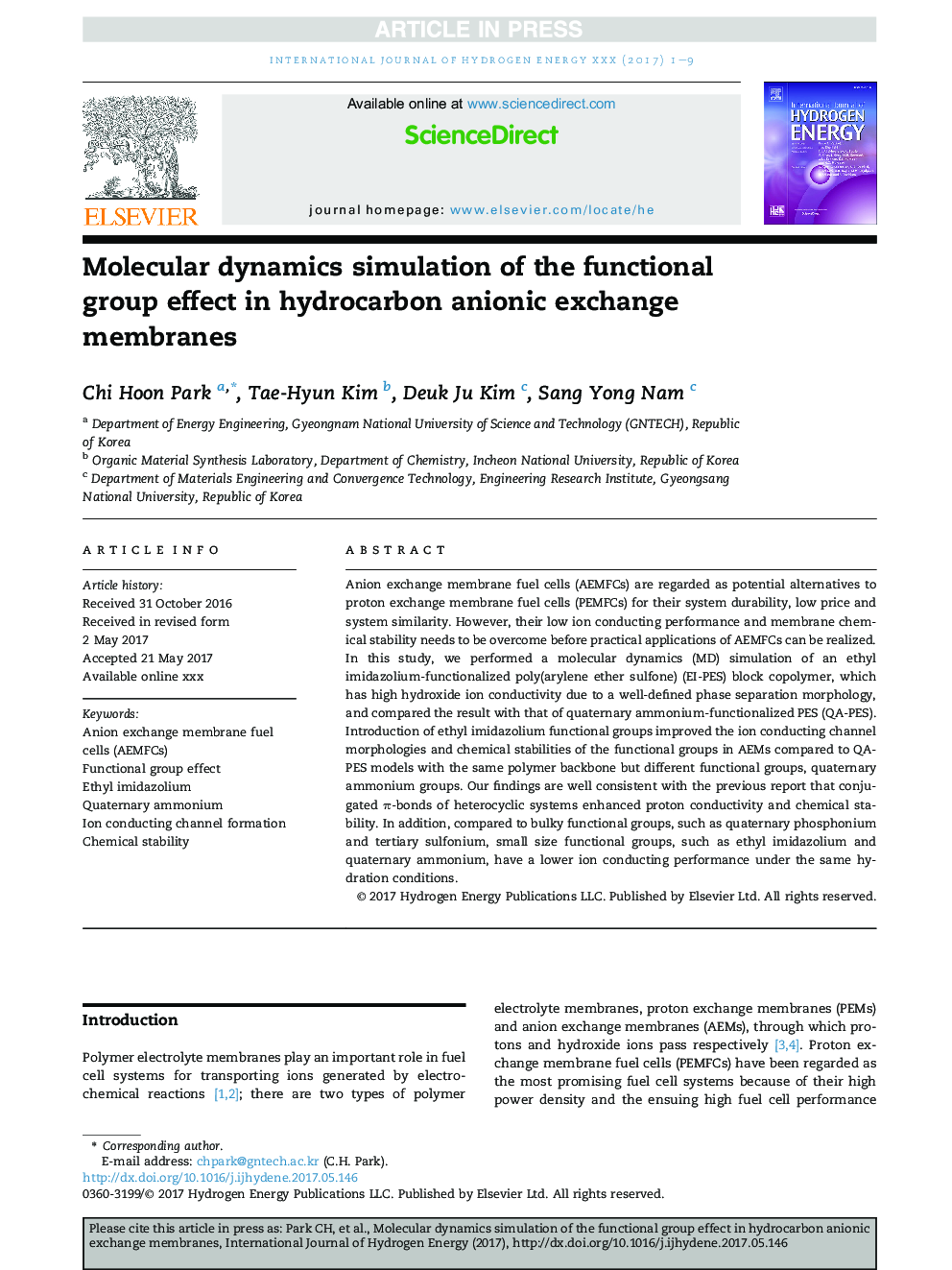| Article ID | Journal | Published Year | Pages | File Type |
|---|---|---|---|---|
| 5146300 | International Journal of Hydrogen Energy | 2017 | 9 Pages |
Abstract
Anion exchange membrane fuel cells (AEMFCs) are regarded as potential alternatives to proton exchange membrane fuel cells (PEMFCs) for their system durability, low price and system similarity. However, their low ion conducting performance and membrane chemical stability needs to be overcome before practical applications of AEMFCs can be realized. In this study, we performed a molecular dynamics (MD) simulation of an ethyl imidazolium-functionalized poly(arylene ether sulfone) (EI-PES) block copolymer, which has high hydroxide ion conductivity due to a well-defined phase separation morphology, and compared the result with that of quaternary ammonium-functionalized PES (QA-PES). Introduction of ethyl imidazolium functional groups improved the ion conducting channel morphologies and chemical stabilities of the functional groups in AEMs compared to QA-PES models with the same polymer backbone but different functional groups, quaternary ammonium groups. Our findings are well consistent with the previous report that conjugated Ï-bonds of heterocyclic systems enhanced proton conductivity and chemical stability. In addition, compared to bulky functional groups, such as quaternary phosphonium and tertiary sulfonium, small size functional groups, such as ethyl imidazolium and quaternary ammonium, have a lower ion conducting performance under the same hydration conditions.
Related Topics
Physical Sciences and Engineering
Chemistry
Electrochemistry
Authors
Chi Hoon Park, Tae-Hyun Kim, Deuk Ju Kim, Sang Yong Nam,
